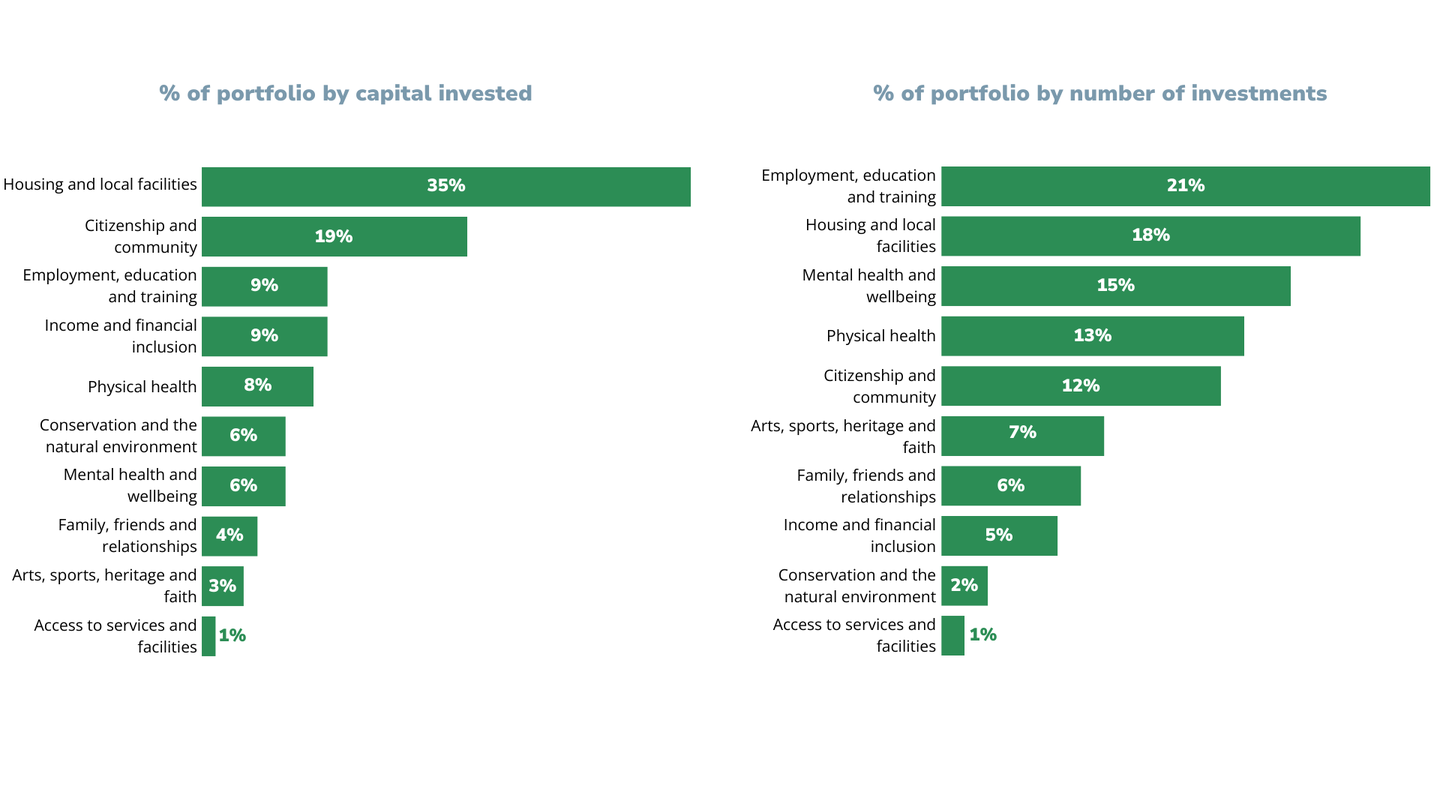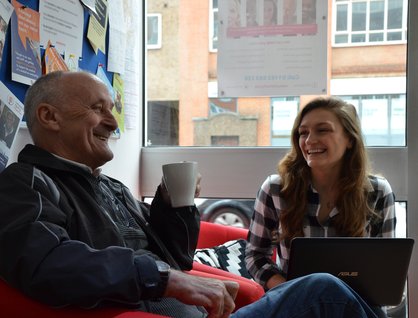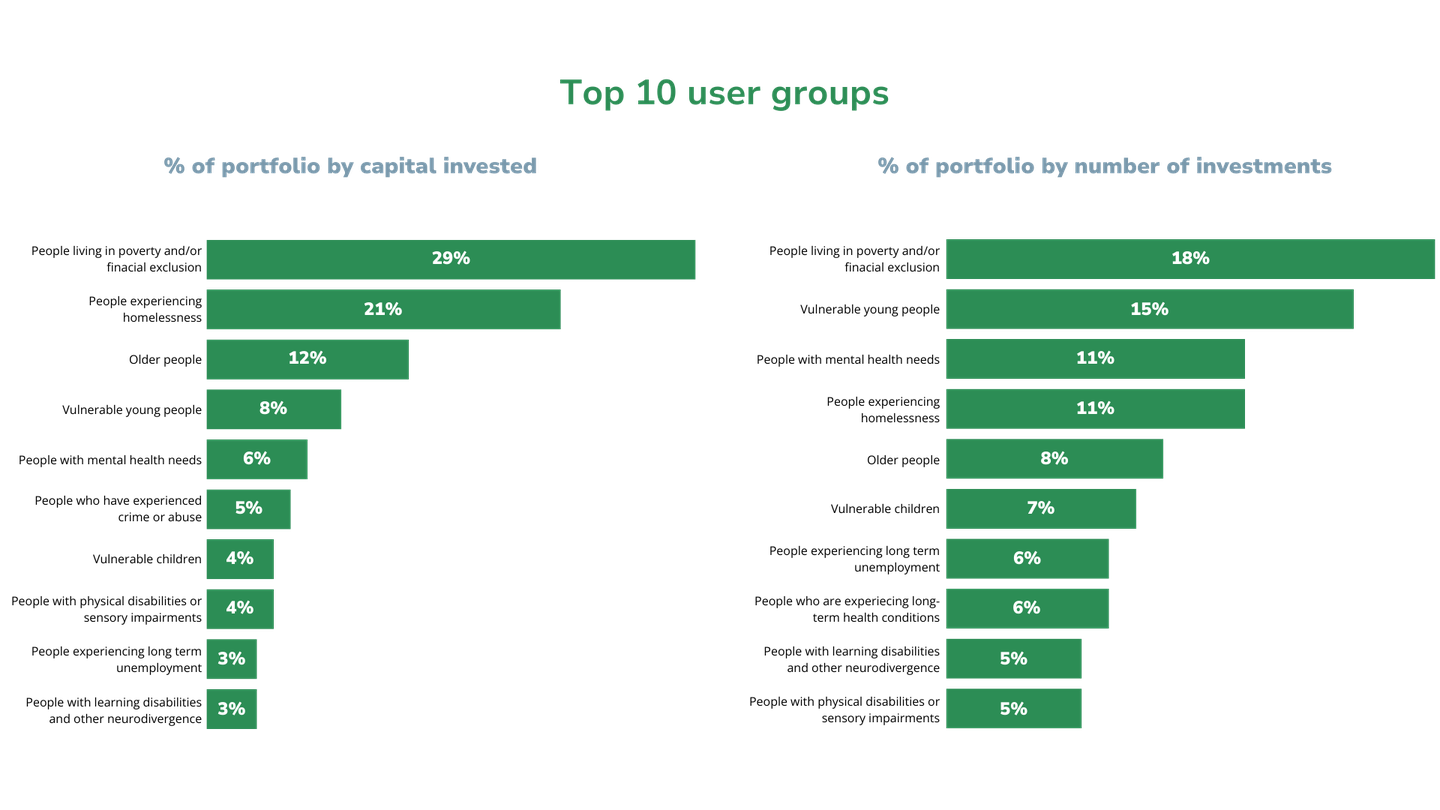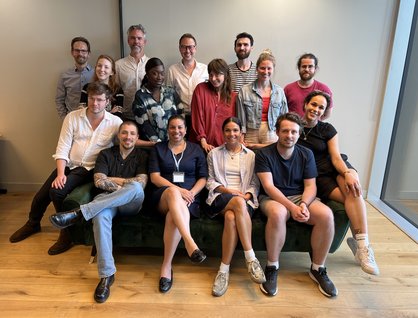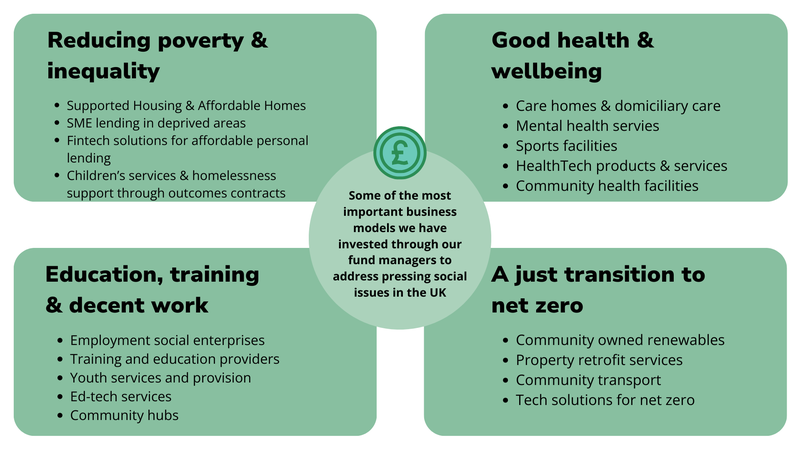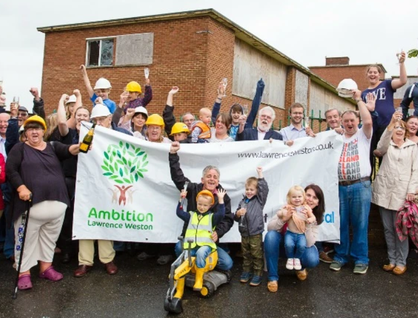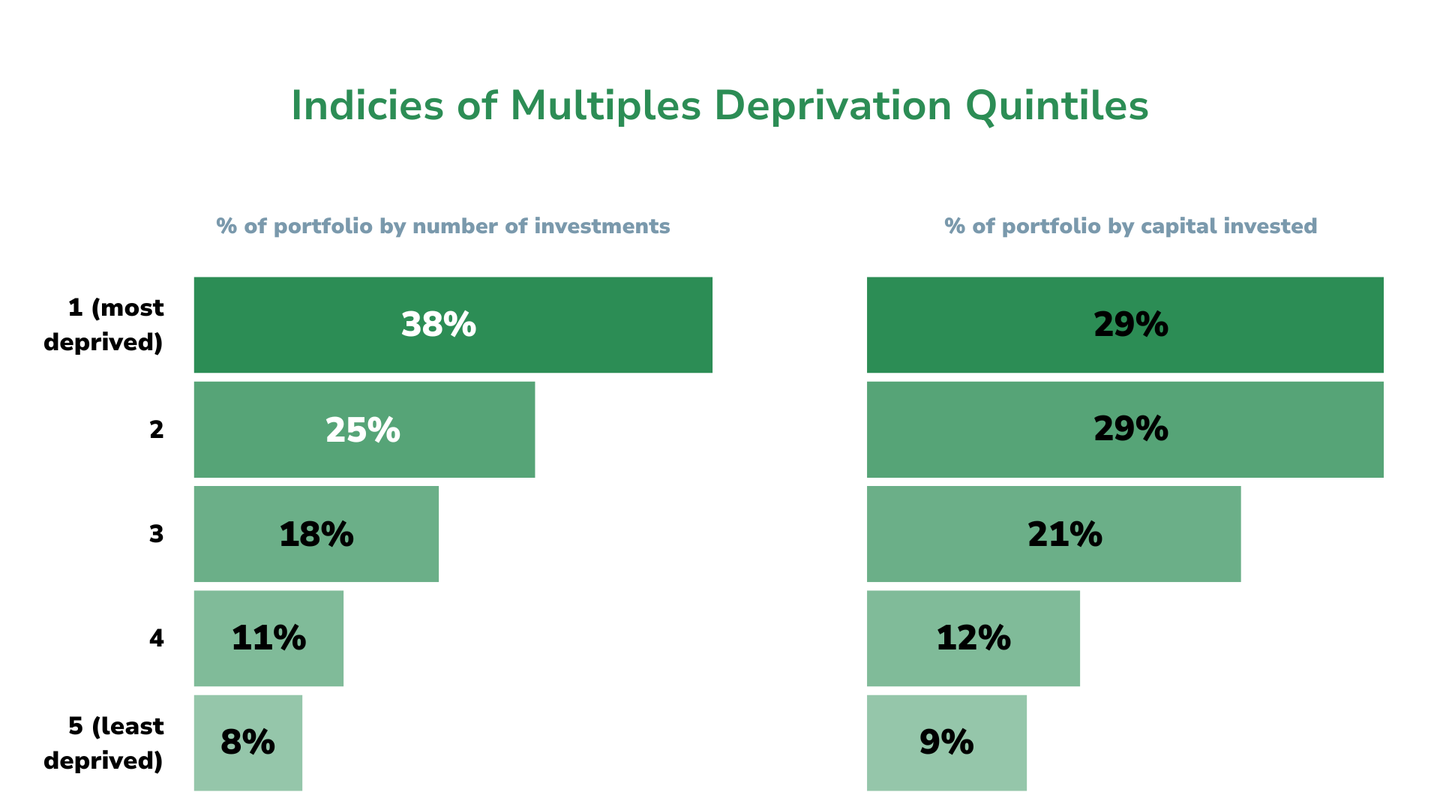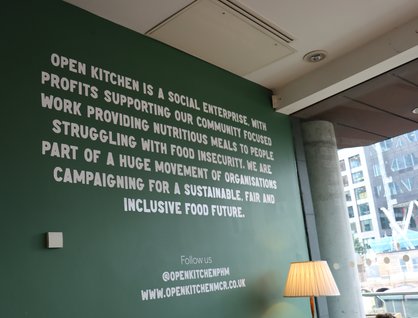Our impact on enterprises and people
Our mission is to help build an investment ecosystem that supports impact-led organisations to address a range of social issues and reduce inequalities in the UK.
This section aims to illustrate and highlight the breadth of enterprises and people our investments support through the fund managers and social banks we invest in, and the social impact that these enterprises create across the UK. The examples in this report are intended to provide insight into the broad range of outcome areas, business models, geographies and end-users that our investments are targeting.
-
3,500+
organisations have received social investment from Big Society Capital since 2012
75%
of enterprises taking on investment are targeting vulnerable and/or underserved groups of people
60%
of enterprises that have received investment are located within the most deprived areas of the UK
We collect the data points below on our investments, to track and communicate our impact on the enterprises taking on social investment and the people benefiting. While we don't collect “number of people reached” consistently across our entire portfolio, we know from fund managers’ impact reports that our investments help create important outcome changes for large numbers of people:
About the data in this reportRead more about the data points we collect across our portfolio, regarding the types of enterprise and people benefiting from our investments and market-building efforts.
We code our investments based on their alignment to the SDGs on a primary, secondary, and tertiary basis. This provides insight into the top three SDGs each investment is supporting; however, many investments will be targeting more than three SDGs and therefore will not always capture the full range. The visualisation below focuses on the primary SDG alignment. The primary SDGs that feature most dominantly by commitment value across our portfolio are:
Primary SDGs across our portfolio
-
33%
Sustainable cities and communities
Investment actively fostering sustainable urban development
27%
Good health and wellbeing
Investment contributing to enhancing health and wellbeing
20%
Affordable and clean energy
Investment supporting initiatives to drive energy affordability and transition
This content is not visible because you have denied third-party cookies. Update your cookie settings and refresh the page to interact with this element.
Case study
Open door
Bridges Outcomes Partnerships created Refugee Better Outcomes Partnership (RBOP) to support refugees with integration and employment via two outcomes partnerships.
Open door is a delivery partner for a social outcomes contract operating in the North-East of England, supporting newly granted refugees with access to stable housing and employment.

